
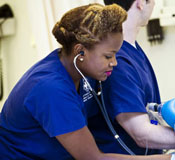
FY 13 research totals |

JScreen for genetic testing |
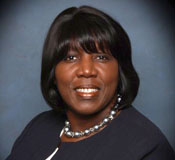
Connecting with consumers |
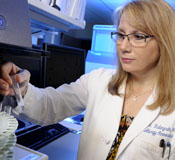
In brief |
Understanding the strategy: Emory Healthcare's new brand
 |
| One of three new commercials from Emory Healthcare. |
You probably already knew this, but we're all in this together. Those words seemed such an appropriate theme that Emory Healthcare (EHC) chose them to launch its new logo, signage, and series of television and print ads in early September.
"Our new tag line says it all," says John Fox, EHC CEO. "This is about who we are, how we are able to reduce costs while continuously improving quality, and where we are going as an organization."
The tag line is intentionally not specific to any one group, says Sandra Mackey, EHC's executive director of market strategy and support (see profile). "If you're a patient and we're talking about family and patient-centered care, then we're all in this together. The family becomes part of the team. If you're a physician or a staff member, then 'We're all in this together' means you're going to do everything possible to give every patient the best possible care and service."
EHC is featuring the tag line and associated branding in new television ads. The ads capture a number of themes that Mackey and her team want people—both staff and consumers—to associate with the words "Emory Healthcare":
- Emory will bring staff and families together to find answers.
- Emory will take big city health care beyond the big city.
- Emory will develop new science and solutions.
- Emory will help make health care more affordable and attainable.
The TV ads had to be compelling to consumers and connected in theme with the brand-positioning video that was shared internally across the organization. Yet none of the TV ads feature doctors, nurses, or health care settings. Two of the three spots don't even feature people.
"These are not stereotypical stethoscope-around-the-neck commercials," says Mackey. "They don't have Emory people in them; they're about the people we serve."
Mackey, project co-manager Amy Comeau, and their team hired a marketing research firm to assess how consumers felt about EHC and its advertising, in the wake of health system consolidations, including EHC's partnership with Saint Joseph's Hospital, and health care reform measures.
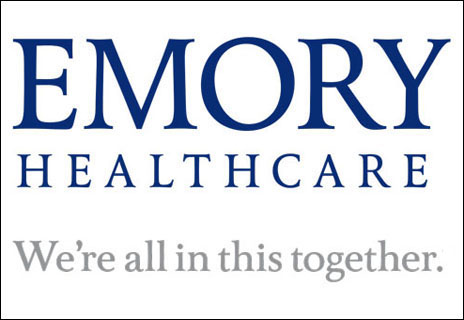 |
|
| The new Emory Healthcare logo. The gold "swoosh" is gone, a decision made in keeping with the advertising trend of simplifying logos. |
The firm found that Atlanta consumers felt overwhelmed by health care advertising and wanted simple, plainspoken ads. Moreover, when asked about their favorite TV ads, the focus groups chose ones that told a story and didn't try to hard-sell. TV spots typically run 30 seconds, but these EHC commercials run 60 seconds "since we are telling a story," says Mackey.
The advertisements, new logo, and associated branding have been months in the making. Before the new brand could be rolled out to an external audience, however, it was crucial first to explain the brand strategy in detail to the internal audience and get their buy-in.
With help from a team of internal communicators led by Melanie De Gennaro, Mackey and her colleagues conducted a communications blitz throughout EHC, talking to department chairs and physician groups, who in turn talked to faculty and staff and to private practice physicians. The mantra behind the message was that service was key to success, says Patrick Hammond, chief market services officer: "If we can't live it, we can't say it."
"The foundation of any brand repositioning lies within the people who actually provide services, in this case those who care for our patients," says Mackey. "These are the people we depend on to make our brand come alive. Without them, our branding message is just words without meaning."
The new brand strategy helps us describe to ourselves and others who we are, where we're headed, and how we can have a positive impact in today's health care market, adds Hammond. "EHC leadership has a vision of where EHC should be in quality and reputation, and this branding initiative is part of the means to get there."—Kay Torrance
External research funding tops $500 million for fourth year
 |
| The nursing school received a $4 million grant to train nurses for veteran care. |
External funding totals for research for Emory University totaled $507.1 million for fiscal year 2013, marking the fourth straight year that Emory totals have exceeded $500 million. In FY 2012 Emory received $521.9 million in funding.
Federal agencies awarded nearly $333.8 million of the university total, or more than 65%, led by the NIH, with $286.3 million in awards.
Of the $507.4 total for FY 2013, WHSC researchers received approximately $474.4 million, which is broken down as follows:
- School of Medicine, $330.5 million
- Rollins School of Public Health, $63.9 million
- Yerkes, $64.8 million
- Nell Hodgson Woodruff School of Nursing, $9.3 million
Examples of WHSC funding for FY 2013 include grants and contracts to do the following: develop drugs and vaccines to treat malaria, create the first exposome center in the country, study HIV in women, conduct clinical trials of vaccines against emerging infectious diseases, explore brain chemistry relevant to autism and schizophrenia, establish a glycomics center to shed light on the role carbohydrates play in disease, increase the number of nurses available in the coming years to treat our nation’s veterans, and help nurses and physicians collaborate to refine care models that improve quality while reducing cost.
"We are very proud of our faculty and their ability in difficult times to attract research funding based on their excellent past results and the promise of their research proposals," says David Stephens, WHSC VP for research. "However, we know that tremendous challenges lie ahead in maintaining our research momentum. Research requires sustained funding, and the sequester, slowdowns, administrative uncertainty, and continued reductions in federal funding will be cumulative and have lasting effects on these advancements that improve health." (See EVPHA message.)
 |
The medical school's human genetics department is managing a new nonprofit public health initiative, JScreen, to provide at-home genetic screening and private counseling for people with Jewish lineage to determine their risk for hereditary diseases that could be passed to their children.
There are genetic markers for 19 genetic diseases that are more common in the Jewish-Ashkenazi community, including those for Tay-Sachs and Canavan disease. Individual carriers are healthy, but couples who are both carriers can risk passing the disease to their children. JScreen also offers an expanded panel, useful for couples of mixed descent and interfaith couples, which screens for a total of 80 diseases.
JScreen provides an easy-to-use at-home saliva test. If a person or couple's risk is elevated, Emory genetic counselors will privately address their results, options, and resources to help ensure a healthy pregnancy and healthy baby, according to Karen Arnovitz Grinzaid, JScreen senior director.
JScreen will start in Georgia, Florida, North and South Carolina, Virginia, Maryland, and the District of Columbia. For those with medical insurance, the cost of screening usually will not exceed $99, and is often lower, depending on insurance. Read more.
One advantage of being head of marketing for Emory Healthcare is the quality and breadth of services on offer, says Sandra Mackey, EHC's executive director of market strategy and support. And one challenge is that many competitors are trying to be—or at least sound—a lot like Emory.
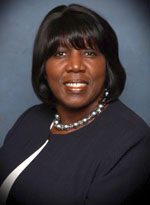 |
|
| Sandra Mackey |
Mackey's job is to keep both patients and referring physicians informed about what Emory can provide uniquely ("both routine and highly specialized care unavailable elsewhere in the region") and about Emory's own similarity to the best local hospitals in terms of ease of access, expanded geographic reach, and neighbor-friendly services.
So how do Mackey and her team connect with the market to demonstrate Emory Healthcare's higher value?
First, there's branding, which she describes as a "consistent expression of a value for which a product or institution is known." Think Volvo = safety or Mercedes = luxury. It's a process she knows well, having developed the branding strategy for energy marketing company Mirant when it spun-off from Southern Company in 2000. In the wake of consolidations in health care and Emory's expansion in the market, Emory Healthcare leaders decided to tackle the issue of identity and positioning. They hired a firm to conduct a brand research study to ascertain consumer perception about Emory Healthcare and identify opportunities to clarify and enhance it. What resulted are a new logo, tag line, and ad campaign. Read branding article.
In addition to branding, Mackey and her team are responsible for finding the most powerful and cost-efficient ways to communicate EHC's messages. Many of the traditional media outlets still work: radio, TV, print, direct mail, even billboards. "Online media have also opened up a whole new world for us as consumers turn to the web for the majority of their needs," says Mackey.
The social media community goes beyond pressing "like" on Facebook and includes patients who post details of their experiences (positive and negative) and participate in live web chats with Emory physicians. EHC has dozens of videos on numerous topics and has embraced liberal use of QR codes. "These tools help us interact with and listen more to those interested in our services," says Mackey.
The best type advertising of all, says Mackey, is word-of-mouth, something money can't buy. And there is no more valuable word-of-mouth resource than EHC's own clinicians and staff, "our best ambassadors for spreading the word about what we do and how well we do it."
Mackey, who has a nursing degree from Birmingham University in her native England, has more than 25 years of experience in her field. She has worked at Emory Healthcare for eight years, first as director of heart and vascular marketing and in her current role for the past four years, reporting to Patrick Hammond, chief market services officer. She heads a team of 15—marketing staff responsible for product lines, facilities marketing, market research, and management of the Emory Healthcare website. It's fun and fast-paced, says Mackey, all part of getting out the word about Emory Healthcare. "It also only happens with a team of dedicated professionals who make the work at the bedside relevant to consumers every day."
Research funding still strong, challenges ahead
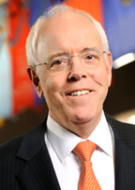 |
|
| Wright Caughman |
Final research funding figures for FY2013 are in and, as expected, the Woodruff Health Sciences Center (WHSC) experienced a decline due to sequestration and other external challenges. In spite of the difficulties of the current environment, our research funding dipped slightly less than 2%, and, at $474.4 million, still represents nearly 94% of Emory’s total research dollars. (See related article.)
At a time when many of our peer institutions experienced more serious declines, our continued success is a testament to the outstanding people of the Emory research enterprise and to the lifesaving quality of the work they do. At the end of the day, our research program isn’t about high volume—it’s about high impact.
Of course, that doesn’t mean we don’t face serious financial challenges. Some of these remain decidedly unclear—we can't yet know the full impact of the current government shutdown or how our government leaders will resolve the debt ceiling crisis. But we do have some idea of the effects of sequestration, and these continue to be a major concern.
Take research funding, for example. While the overall decline for FY 2013 was only 2% over the previous year, the decline from federal sources was 5%, or $17.7 million. And since sequester cuts are set to accelerate each year for the next eight years, our anticipated research loss from federal sources for FY 2014 may be an additional $24 million.
The effects on clinical reimbursements are sobering as well. Emory Healthcare experienced a $7 million loss from Medicare provider cuts in FY 2013 due to a 2% sequester cut, and this loss could grow to $16.6 million for FY 2014.
Again, let me emphasize that we have many strengths here at Emory, chief among them our faculty, staff, and students. I’m grateful to each of you for your fortitude, creativity, and commitment in finding innovative and resourceful ways to meet our challenges head-on. As you well know, a lot of people are depending on us, especially our patients. As the nation, and by extension WHSC, continues to face an uphill funding battle, I have confidence that you will continue to pioneer advances and provide care to save and improve lives and to help us find ways to make our care more affordable and more accessible to those who need it.
Please share your thoughts and suggestions with me at evphafeedback@emory.edu.
 |
New named professors
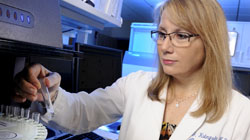 |
| Lisa Kobrynski |
The Department of Pediatrics recently appointed seven new Marcus Professors:
- Lisa Kobrynski in immunology
- William Mahle in cardiology
- Nael McCarty in cystic fibrosis
- Sampath Prahalad in rheumatology
- Andrea (Andi) Shane in hospital epidemiology and infection control
- Hal Simone in emergency medicine and faculty development
The professorships, 15 in all, are part of the Marcus Society, funded by a $5 million gift from the Marcus Foundation to tackle complex issues affecting children.
In addition, the following WHSC faculty were appointed to other named professorships/chairs:
- Jack Arbiser was named the Thomas J. Lawley Professor of Dermatology.
- Amy Chen was named the Willard and Lillian Hackerman Professor in Otolaryngology.
- Ira Horowitz was named the John D. Thompson Endowed Chair in Gynecology and Obstetrics.
- Paige Tolbert was named a Rollins Professor of Environmental Health.
NIH award to study infectious disease
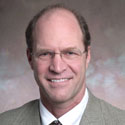 |
|
| Mark Mulligan |
The National Institute of Allergy and Infectious Diseases has awarded Emory a contract to test new vaccines and therapies for infectious, immunologic, and allergic diseases. Emory is one of nine NIH Vaccine and Treatment Evaluation Units (VTEUs) receiving contracts for vaccine evaluation. The contracts for the VTEUs are valued up to $135 million annually over a seven-year period. Mark Mulligan is principal investigator of Emory's VTEU. Read more.
New glycomics center is funded
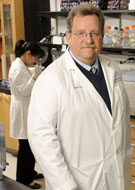 |
|
| Richard Cummings |
The NIH funded a new National Center for Functional Glycomics, to be directed by Richard Cummings, chair of biochemistry in the medical school. The total five-year award is more than $5.5 million. Cummings also leads the Consortium of Functional Glycomics, which is the world's largest group of glycomics researchers. The center's focus will be technology development, emphasizing exploration of the molecular mechanisms of glycan recognition by proteins important in human biology and disease. Read more.
While at Emory Johns Creek Hospital, charge your car
 |
|
| Anesthesiologist Shawn Tritt charges his Tesla at EJCH. |
Emory Johns Creek Hospital (EJCH) has installed six charging stations for electric vehicles. EJCH took advantage of federal tax incentives to purchase and install the stations. With the incentives, the stations were free, and installation was discounted.
Medical exhibit runs through October
 |
"Medical Treasures at Emory," an exhibition of historical medical books and artifacts, such as a binaural stethoscope circa 1860 and a Civil War surgeon's kit, runs through October at Emory University's Woodruff Health Sciences Center Library. Robert Gaynes (infectious diseases) is the exhibition curator with Matt Miller, a resources management senior specialist at the library. Watch a video.
Appointments
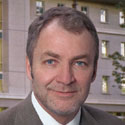 |
|
| Walter Curran |
Walter Curran (executive director, Winship Cancer Institute) was named a Georgia Research Alliance Eminent Scholar and Chair in Cancer Research. Read more.
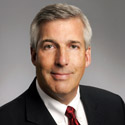 |
|
| David Guidot |
David Guidot (Jeffrey R. Pine Professor of Medicine) was appointed to the Emory Healthcare Board of Directors.
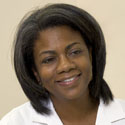 |
|
| Monica Parker |
Monica Parker (geriatric medicine) was elected to the board of trustees of A.G. Rhodes Health & Rehab, which provides rehab services and short- and long-term care.
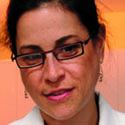 |
|
| Andi Shane |
Andi Shane (pediatric infectious diseases) was appointed system physician epidemiologist for Children's Healthcare of Atlanta. She replaced Harry Keyserling, who is retiring.
Awards and honors
The following health sciences faculty and staff received awards and honors: View details.
• Bill Bornstein
• Sanjay Gupta
• Jeffrey Koplan
• Tracey Lamb
• Melissa Pinto
• Raymond Schinazi
• Laurence Sperling
• Donald Stein
• Viola Vaccarino
• Frans de Waal
Events
Oct. 30: 2013 EHC Quality Conference, 7:30 a.m. - 12 p.m., Cox Hall, 3rd floor ballroom.
Nov. 13: Emory Medicine 2014 annual address by Dean Chris Larsen, 4:30 p.m., WHSCAB auditorium, followed by reception on plaza. RSVP.
